
Introduction: When the traffic dividend encounters high privacy barriers, who can stand out in the "commodity as advertisement" war?
Entering 2025, the track of cross-border e-commerce has shifted from being a "traffic heavy player" to a deep-water area of "precise reach and efficient conversion". The platform rules have been tightened layer by layer, with iOS privacy policies and EU GDPR/CCPA compliance like double walls, blocking all low-cost customer acquisition methods based on cookies and redirects.
At the same time, consumers' shopping scenes are no longer limited to search pages, but are constantly bombarded by multiple scenarios such as search, video, social, email, etc. While brands are still anxious about where to invest the most money, Google Shopping ads have become an exceptionally sharp weapon for "precise customer acquisition and transaction".
Imagine a scenario where your target user finishes watching a short video in the early hours of the morning and accidentally searches for "wireless earbuds under 50". The page immediately pops up with a product card containing your top selling product, displaying real-time inventory, local currency pricing, and user reviews. Between a few swipes and clicks, the purchase intention completes the three closed loops of "ignition verification transaction" - at this moment, conversion rate is no longer an illusory indicator, but a controllable variable in your hands.
This guide not only provides you with the underlying construction and feed optimization strategies of Google Merchant Center, but also breaks down the brand's practical tactics in different markets and stages from Campaign architecture, advertising strategy to data loop and future innovation from multiple dimensions.
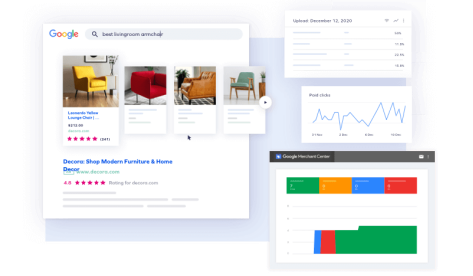
Whether you are a front-line trader or the top decision maker in the steering team, you will find the growth path and technical thinking of "from 0 to 1, from 1 to N, from N to the future" here.
Are you ready?
Let's delve into this new battle of "intention reach conversion repurchase" led by Google Shopping advertising, and add the wings of efficiency and resilience to your brand.
With the new iOS privacy policy and EU GDP; Upgrades and the decline of traffic dividends on major platforms, the previous "solely relying on Facebook+TikTok advertising" approach is no longer sufficient to support the growth goal of integrating product and effect. Google Shopping Ads (GSA), due to its ability to directly display product images, prices, and selling points on search results pages, as well as its coverage of multiple scenarios such as Search, Shopping Tab, YouTube, Gmail, and Discover, has become a battleground for cross-border brands to seize the strongest purchasing intention users.
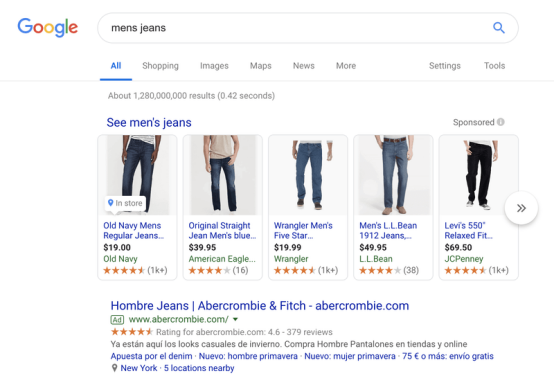
Firstly, from the perspective of traffic structure, the Google platform has a daily average of 3 billion monthly active search requests, of which nearly 50% are shopping intent keywords. Compared to traditional text search ads, GSA presents product listing ads (PLAs) on the first screen in a combination of text and images, greatly increasing click through rates (average CTR+30%). This means that with just a high-definition main image and a precise title, you can capture the attention and clicks of potential buyers at the moment they most want to place an order.
Secondly, in terms of cost efficiency, GSA's bidding model fully supports intelligent bidding strategies such as Maximizing Conversion Value, Target ROAS, and Enhanced CPC. Thanks to the powerful shopping feed data foundation and Google's self-developed machine learning algorithm, you can use Manual CPC for small-scale testing in the early stages of advertising, accumulate enough conversion data, and quickly switch to Target ROAS to achieve efficient volume increase with "less is more".
Furthermore, from the perspective of private domain and brand assets, GSA is not a "short-term tool" independent of brand reach, but a "growth link" that can deeply link with omnichannel advertising forms such as YouTube Bumper Ads, Display Remarketing, Performance Max. On the one hand, it can accurately capture high intention users downstream; On the other hand, by using the custom tags (custom_1abel_0-4) and custom promotional text functions in the feed, you can seamlessly switch between Search ads and Shopping ads, completing a closed loop of "planting grass → conversion → re marketing → repurchase".
Finally, looking at future trends, the GSA of 2025 will no longer be just a set of static product cards, but will become an AI driven "intelligent product display platform". With the powerful image recognition and intent prediction capabilities of Google, Shopping Ads will support AR preview, dynamic pricing, real-time inventory annotation, and even deeply connect with new touchpoints such as YouTube Live, Google Lens, Wear OS, etc. in the future, allowing brands to connect with consumers in a more refined and interactive way.
Therefore, in 2025, whether it is DTC brands that have just transformed from platform sellers or top merchants who have already achieved high GMV on Amazon/AliExpress, Google Shopping advertising should be included in the core growth matrix, using a full process and full scenario approach to build a solid moat for brands to step onto the global track.
In the growth logic of cross-border e-commerce, advertising is only the last link; Before this process can proceed smoothly, the key to determining the success or failure of Google Shopping advertising lies in the preliminary preparations, including Merchant Center account architecture, site compliance verification, product feed design, and deep integration with Google Ads.

Technological infrastructure is the first moat of transformation, and early preparation is also the "invisible lever" of investment efficiency. This chapter will break down the "Five Steps", "Three Core Competencies", and "Two Automation Processes" to ensure that each number one position can push Google Shopping advertising to the "best practice" level in the shortest possible time.
Cross border independent stations often target multiple regional markets such as Europe, America, Southeast Asia, Japan, and South Korea.
For brands with small SKU quantities and a focus on the European and American markets, a single GMC (Google Merchant Center)+; The approach of multi-objective countries is the most efficient; For brands that want to cover more segmented regions such as Latin America, the Middle East, and Eastern Europe, with over a thousand SKUs, it is recommended to establish multiple GMCs for the core market, combined with multi currency and multi language settings, to truly achieve localized operations.
Advantages of a single GMC: unified management, low feed maintenance costs
Multi GMC advantages: customizable shipping and tax rules for each country, refined price management
In GMC, you need to complete "Site Verification and Declaration" (URL Verification) and "Enterprise Information and Policy Certification" (Tax&Shipping). Especially with the continuous upgrading of PAYG (Payment and GST) and strict tax compliance requirements in European and American countries, VAT rates and SDG tax rates are updated in real-time. Brands must ensure that they are listed in the Tax& In the Shipping module, independently set tax rates and freight rates for different countries. Otherwise, the feed review will be blocked by "price inconsistency" or "policy violation", which will affect subsequent campaign placements.
A high-quality feed is not just a "runnable" inventory table, but a super operator who efficiently splits campaigns and ad groups.
Required fields: ID, title, description, link, imagenlink, price, availability;
Brand and certification: brand, gtin, mpn;
Category tags: googlesproduct_category, product_date;
Custom Label (custom_1abel_0-4): Label according to dimensions such as season, promotion, lifecycle, profit margin, margin Tier, etc., to facilitate future layered advertising and dynamic price adjustments in campaigns;
Advanced attributes: such as energy_efficient_class, material, color Industry specific fields can be directly displayed in the user side filter to improve accurate matching.

For large SKU categories, it is recommended to use Content API for Shopping Perform real-time incremental updates to ensure that prices, inventory, and promotional information are consistent with the website, and eliminate account penalties caused by "product failure" due to feed delays.
After the GMC is fully configured, the next step is to connect it with the Google Ads account:
Add Ads customer ID in GMC "Settings → Associated Accounts";
Confirm the association in Ads' Tools and Settings → Merchant Center ';
Deploy the entire site; Google Ads Conversion Tracking: Through gtag.js; Or use Google Tag Manager to synchronize events such as Purchase and AddToCart, ensuring that every data from click to transaction is accurately traceable;
Conduct Intelligent bidding preheating: After verifying the validity of the feed and materials with Manual CPC in the initial stage, switch to Maximize Conversion Value; Or Target ROAS, allowing the algorithm to learn the optimal population portrait during the data accumulation phase.
When the account forms a closed loop with the feed, conversion points, and bidding strategy, you can truly complete the transformation from "static display" to "full chain growth", laying a solid foundation for subsequent campaign strategies and continuous optimization. Each step is not a formal operation, but rather a high-precision integration of "traffic" and "data" before deployment, so that the subsequent campaign strategy is no longer a "passive water", but a solid infrastructure and data loop to quickly release growth potential.
After completing the construction of the Merchant Center and optimizing the feed, the success or failure of Google Shopping advertising is truly determined by the design of the Campaign architecture and advertising strategy. The biggest difference between the advertising environment in 2025 and the past is that user touchpoints are more dispersed, the pace of advertising is more fragmented, and data feedback is becoming increasingly rich.
Therefore, we need to build a flexible and replicable Campaign architecture from four dimensions: "advertising form", "audience segmentation", "time zone rhythm", and "precise interception", to maximize the conversion of advertising budget into real sales.
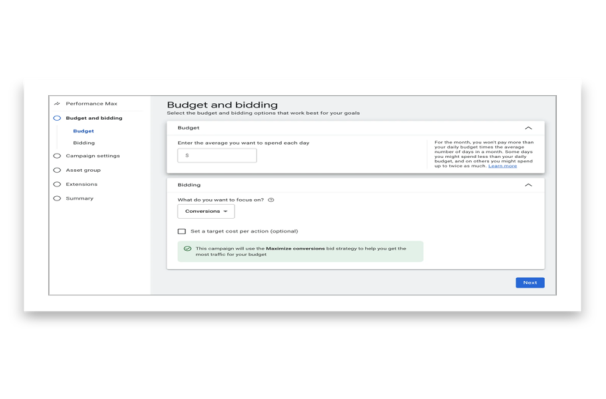
Shopping Standard
Advantages: Can finely control Ad Group and bid, suitable for new product testing and popular product development;
Disadvantage: Need to manually split SKUs, high management complexity;
Performance Max (Intelligent Display Advertising)
Advantages: One click coverage of all networks such as Search, Display, YouTube, Discover, Gmail, etc., with the system automatically allocating budgets and bids;
Disadvantage: Low visibility of advertising logic and materials, suitable for brands with stable ROAS and a large number of conversions for incremental expansion.
New Product/Testing Period: In the first week, use Standard Shopping to test the SKU and custom labels for the new product;
Stable period: Performance Max+Marketing list in parallel to ensure efficient reach across all channels;
Promotion period: Temporarily raise the campaignprioritize for popular SKUs in the Standard Campaign, supplemented by Dynamic Remarketing advertising;
Utilizing the custom_1abel_0-4 feature in the feed; Tags, building multi-dimensional Ad Groups:
Bestsellers vs. Seasonal vs. Clearance: corresponding to custom_label_0 = bestseller、custom_label_1 = seasonality、custom_label_2 = clearance;
High gross profit vs. ordinary vs. low profit: corresponding to custom_1abel_3=high_margin Wait;
New product vs. cross selling: corresponding to custom_1abel_4=new_1aunch Wait;
Through this method, you can classify products based on ROI, inventory, and lifecycle under the same campaign, and flexibly adjust prices and budget allocation according to the real-time performance of each group.
Cross border brands operate in multiple markets in parallel, and the pace of deployment needs to consider the "peak traffic" and "conversion window" in major time zones of the United States, Europe, and Southeast Asia
East Coast Market (UTC – 5): Budget can be increased locally from 8am to 10pm;
European market (UTC+0~+2): can be synchronously allocated locally from 9am to 11pm;
Southeast Asian market (UTC+7~+9): Ensure sufficient budget during the local afternoon session (12-22).
Combined with the "daily budget segmentation" feature of Google Ads, a "daily budget reminder+automatic increase" strategy can be formulated in advance to ensure global 24/7 advertising coverage and avoid budget waste during low traffic periods.
Although GSA cannot specify positive keywords like search ads, it can use; Negative keywords block invalid traffic:
Add words such as' free ',' cheap ',' manual ',' replacement parts', etc. that indicate no intention to purchase;
For high competition or competitors in the same category, the negative keyword "competitor brand" can be set in the standard Shopping Campaign to avoid direct competition with competitors;
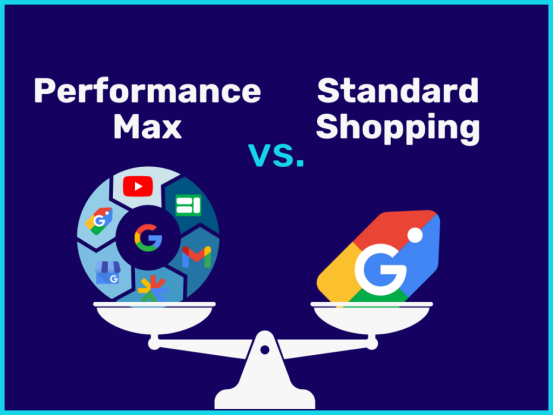
Not satisfied with "single point explosion", but building a three-dimensional advertising matrix of "multi-level, multi scenario, and multi market" is the core of Campaign architecture and advertising strategy.
Layered advertising format: Combining Standard Shopping and Performance Max to achieve cross stage collaboration between "refined testing" and "intelligent volume expansion";
Grouping and grading management: With the help of custom tags in Feed, SKUs are grouped by profit, lifecycle, season, and market, accurately matching differentiated budgets and bids;
Time zone and budget rhythm: Ensure "24/7 exposure" in the global market through multi regional campaigns, automatic rules, and daily budget buffering;
Precise interception: Using negative keywords and competitor blocking to filter out invalid traffic and enhance the commercial value of every exposure and click.
Only when the above four strategies overlap and work together can your Google Shopping ads maintain efficiency and resilience in the ever-changing cross-border environment, bringing sustained, healthy, and scalable growth to your brand.
Advertising is not afraid to do it once, but afraid to do it for a day and then ignore it. To make Google Shopping advertising the center of sustained growth, it is necessary to establish a closed-loop system of "data → insight → adjustment → review". Starting from the closed-loop system, we will deeply analyze how to make Google Shopping advertising no longer a one-time "traffic explosion", but a truly sustainable, quantifiable, and replicable growth engine.
In the marketing environment of 2025, with high customer acquisition costs and constantly adjusting channel policies, only by establishing an efficient data operation system can your cross-border brand continue to climb on the track of "no trough, controllable peak".
Exposure level: Impressions, Impression Share, Search Impression Share;
Investment level: Clicks, Cost, CPC, Budget Pace;
Conversion level: Transactions, Conversion Rate (CVR), ROAS, AOV;
Deep level: LTV, Repeat Purchase Rate, Add to Cart Rate, Abandonment Rate.
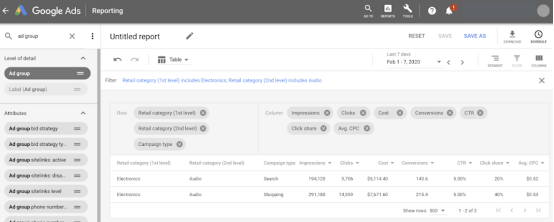
Customize the dashboard using Google Ads reports, Analytics, and Looker Studio (formerly Data Studio) to visualize and track each dimension of data, and automatically alert for excessive or abnormal fluctuations.
Image creativity test: For the same SKU, test the pure white background vs. scene based background vs. model attire, observe the difference between CTR and CVR;
Title and description split test: such as "brand+model+key selling points" vs. "key selling points+brand+model", lock in the display order with the highest conversion;
Comparison of bidding strategies: Manual CPC vs. Enhanced CPC vs. Target ROAS, making precise comparisons at different time periods/product lines;
Promotion Text and Badge Test: In the Promotion_text section of the Feed; In the field, test the impact of different copywriting such as "limited time discount" and "free shipping" on CTR and CVR.
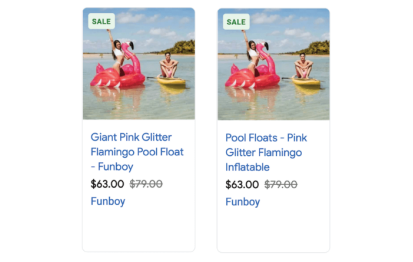
The minimum feasible sample size (at least 500 clicks) and significance test criteria (p<0.05) must="" be="" pre-set="" for="" each="" round="" of="" testing="" to="" ensure="" reliable="" conclusions="" rather="" than="" chance.="">
Brand advertising complementarity: Combine GSA with YouTube Bumper Ads and Discovery Ads, first create scene seeding, and then use Shopping Ads to accurately promote orders;
Hierarchical Marking List: Based on Google Analytics, customize the audience and label users who have not made any additional purchases, abandoned orders, or made their first purchase separately. Accurately target the corresponding Shopping Ads or Dynamic Marking;
Offline stores& LIA: For brands with overseas warehouses or offline stores, enable Local Inventory Ads, combined with "Google Maps+Shopping Tab" dual exposure, to enhance the integration of offline to online conversion.
In this way, GSA is no longer an isolated procurement point, but a "growth engine" that resonates with multiple channels, reaching both new and old customers between the public and private domains, completing the three-dimensional linkage of "traffic brand private domain".
In Google Shopping, there is no 'best', only 'better'.
Therefore, reviewing and iterating should become the "daily homework" of the team. Regularly hold a 'data review meeting' every week, including the advertising team, content and feed maintenance team, BI analysts, operations and customer service representatives, to share horizontally around the 'highlights and pain points of this week's advertising'.
In 2025, with the deep integration of AI, AR, metaverse and other technologies with e-commerce advertising, Google Shopping advertising will also usher in multiple innovative gameplay. The number one brand needs to constantly test new technologies and touchpoints in order to break through again in the next growth cycle.
Automatic Creative Generation: Utilizing Vertex AI and AutoML Vision to automatically generate multiple versions of product images and short videos, and selecting the best ones through A/B testing;
Intelligent bidding upgrade: Build a reinforcement learning model based on first party user data (CRM/Google Signals) to achieve a 5-15% reduction in CAC and a 10-20% increase in ROAS;
Dynamic pricing scenario: Real time adjustment of bid multipliers based on time periods, regions, and user profiles to achieve fully automated budget allocation.
Embedding AR Preview links in Shopping Ads allows users to perform "virtual wearables" and "virtual placements" on Google Lens or mobile devices, stimulating stronger purchasing impulses;
Combining Google Maps with Local Inventory Ads, when users are near the store, they can activate the "AR navigation ->in store pickup" process to achieve the ultimate O2O experience.
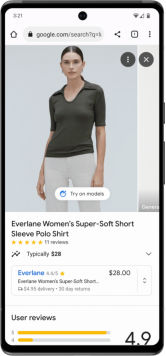
Embed the "Metaverse Showroom" entrance in Google Shopping Ads to experience the entire product process in the VR/AR world, combined with the integrated chain of "instant order → virtual warehouse → real delivery";
Linking social media platforms (YouTube, TikTok) for live streaming sales, allowing viewers to click on "shopping cart" in the live room to place orders directly, completing a seamless transition from content to purchase.
Add sustainability fields such as "sustainable_1abel" and "carbon_offset_1abel" to the feed, allowing brands with environmental and public welfare positioning to gain additional exposure in Google Shopping results;
Participate in Google's "Green Shopping" project, receive platform subsidies and credit labels, and attract more high-value users who are concerned about environmental protection.
Conclusion
Google Shopping advertising has long surpassed the scope of "traditional shopping advertising" and become the core hub for cross-border brand connections in the five links of "intention cognition trust conversion repurchase". In 2025, it will be a rapid iteration period of "data-driven x intelligent creativity x full scene reach". Only by continuously cultivating and trial and error in the entire process of "Merchant Center → Campaign Architecture → Optimization Loop → Future Innovation" can we stand invincible in the global e-commerce wave.
Make your Google Shopping Ads your 'best ally' for business growth, not just a 'buying tool'.
May this guide help you create a cross-border myth in the next harvesting cycle.

Founded in 2013, HSOU TECH LIMITED. is a leading provider of international digital advertising and overseas marketing solutions in China. We are dedicated to helping Chinese enterprises expand globally and have established ourselves as a trusted partner in the cross-border marketing industry.


Mobile website
Copyright © HSOU 2025. All Rights Reserved
